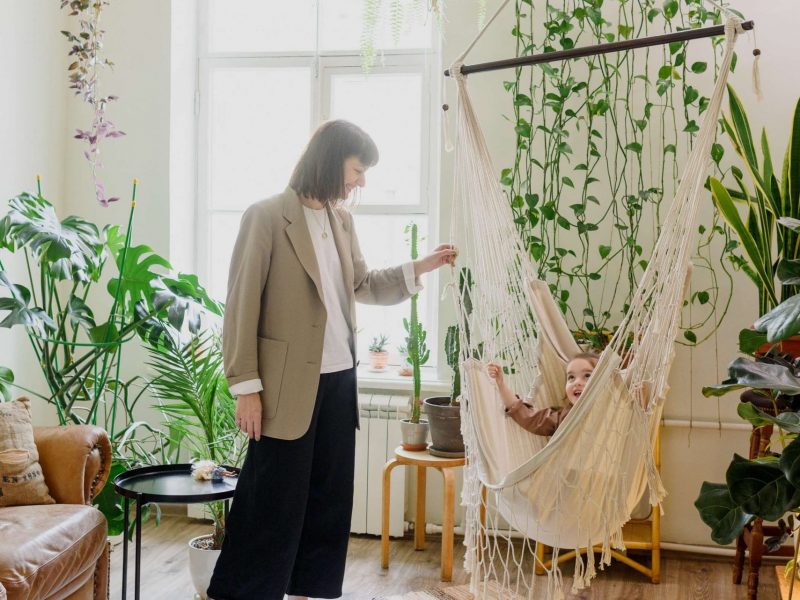
Best plants for a baby’s nursery or children’s room
It’s really important that all the plants you put in your baby’s room are safe and non-toxic. As a parent, you’ve got enough to worry about so with this list of plants you won’t need to stress about if your child is getting too close to a plant. All plants are safe to ingest and don’t have any spikes or prickly leaves.
We have also included some air-purifying plants in this list to help the air be the best it can be for your little one!
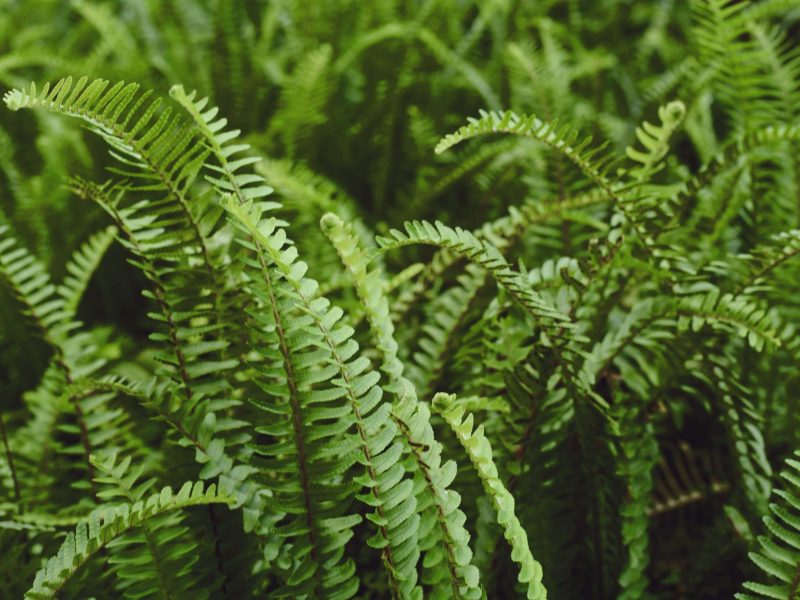
Boston Fern
Nephrolepis exaltata
If you want to bring some jungle indoors, then the lush Boston Fern is the go-to! However, looking after them isn’t always easy as they can be a little fussy when grown indoors. There are two main things that your Boston Fern needs; bright sunshine and high humidity. This means you need to be prepared to mist your Fern daily to avoid crispy leaves.
The one downside we find to owning Boston Ferns is that they do shed a lot of leaves so you’ll find yourself tidying up after it quite a lot. But with the right care, they’ll reward you with luscious green wilderness.
Another great thing about Boston Ferns is they are pretty cheap and you shouldn’t run into too much trouble finding them in plant shops around the world.
Find out more in our Boston Fern care guide.

Spider Plant
Chlorophytum comosum
Spider Plants are the perfect plant for a houseplant beginner as they are super easy to care for, grow pretty quickly, and produce an abundance of spider babies which can be propagated in seconds.
The best thing about Spider Plants is that you would really have to try to kill them as they adapt to and survive in most environments and don’t mind being a little neglected (which is great if you’re a busy new parent). They even show you when they need more water by going quite light green. But after a little bit of water, they spring back to full health in minutes.
As your plant matures, you’ll start to see it sprouting little spiderettes which you can choose to remove from the plant to create new Spider Plants. They really are the gift that keeps on giving.
Find out more in our Spider Plant care guide.
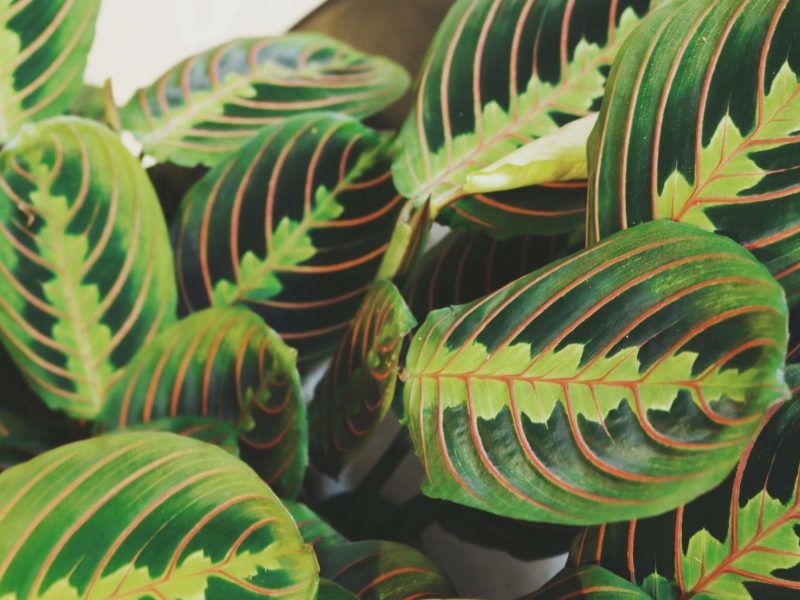
Prayer Plant
Maranta leuconeura
Native to the tropical rainforests of Brazil, the Prayer Plant is loved for its variegated leaves with intricate vein patterns. You can easily spot a Prayer Plant by its leaf undersides as shades of deep red are revealed when the plant’s leaves curl up at night, bringing a splash of colour to your child’s bedroom.
There are several varieties of Prayer Plants that all look ever so slightly different. The most common is the tri-colour which has red-veined leaves but you’ll sometimes see varieties with silver patches or dark green splashes. Prayer Plants are a little fussy though with light conditions, soil moisture and humidity levels though so we don’t recommend this as a starter plant, unfortunately.
Find out more in our Prayer Plant care guide.

Ponytail Palm
Beaucarnea recurvata
This is a Palm with a personality! The Ponytail Palm is loved for its long curly leaves which instantly bring the tropical beach vibes…
Interestingly, the Ponytail Palm is neither a palm nor a tree, it’s actually a succulent which is why they are super low maintenance. All they need is a spot with ample light and warmth and they’ll be happy. They don’t need much water either as they are able to store it in their trunk. The only drawback of the Ponytail Palm is that it’s quite slow-growing so don’t expect it to be constantly growing new leaves. This does mean that you won’t need to repot it for a while so one less thing on the to-do list!
Find out more in our Ponytail Palm care guide.
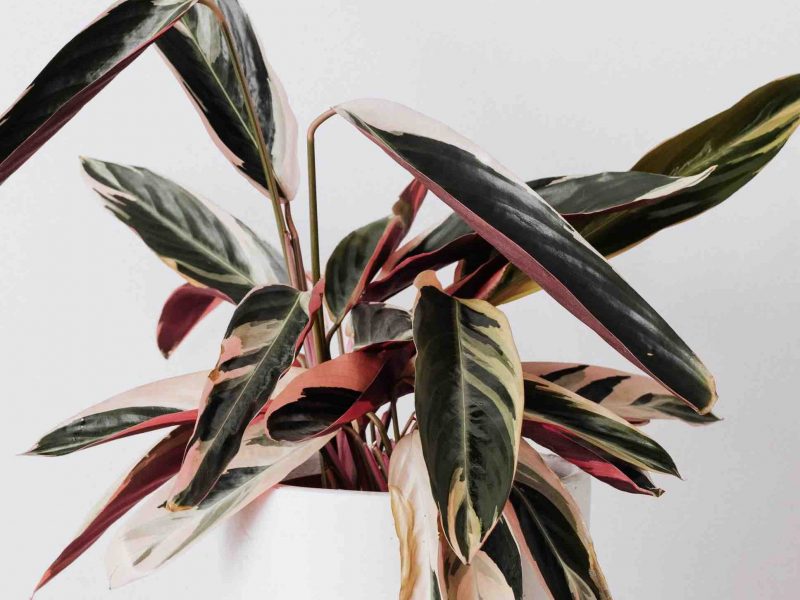
Calathea Triostar
Stromanthe Sanguinea
Part of the Prayer Plant family, Calathea Triostar plants are loved for their incredible white, green and pink leaves. Their vibrant pink leaf undersides really make this plant stand out in a crowd and would bring a nice bit of colour to your baby’s nursery.
As much as we love the Calathea Triostar, they are sometimes a little fussy if things aren’t perfect, so be prepared for a bit of a challenge to keep this one alive and happy. They hate direct sunlight as it can very quickly burn and scorch the leaves. It’s also important that you keep a good level of moisture in the soil, not too much and not too little. The best thing about Calathea Triostars is how quickly they do grow once you get the environment and care just right. Before you know it, there will be new leaves and stems popping up everywhere which makes it a great plant to propagate!
Find out more in our Calathea Triostar care guide.
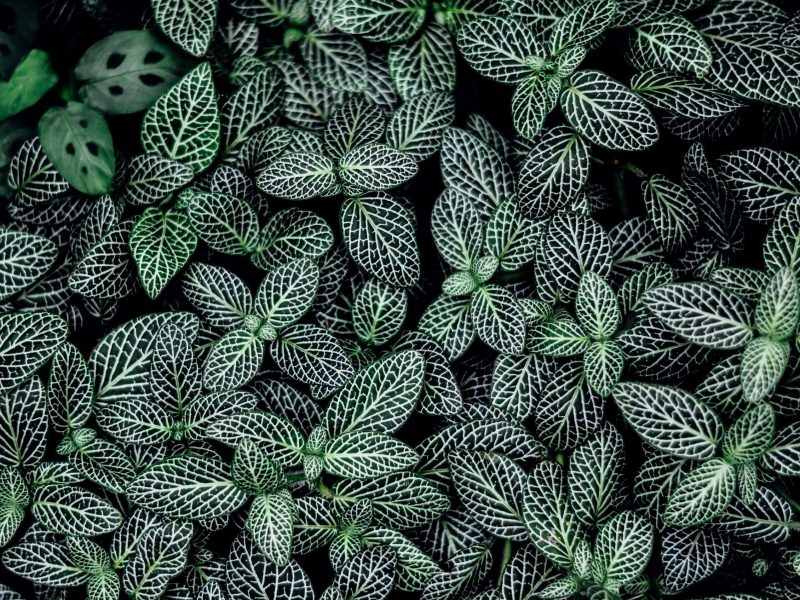
Nerve Plant
Fittonia albivenis
Although the name might make it sound unsafe, Nerve Plants are actually completely safe and non-toxic! With delicate leaves, they are low-growing spreader plants that aren’t always the easiest to care for. The most popular and common variety is silver and green-veined, though you’ll also often spot varieties with white, pink or red veins and leaves too!
They have quite specific care requirements though so we don’t tend to recommend them to beginner plant parents as they are quite fussy about balancing the level of light, water, humidity and temperature. If there is one tip we can give you it would be to mist your plant at every opportunity you have to prevent them from drying out. But if you can get the care routine nailed down, then they are totally worth the extra hassle!
Find out more in our Nerve Plant care guide.
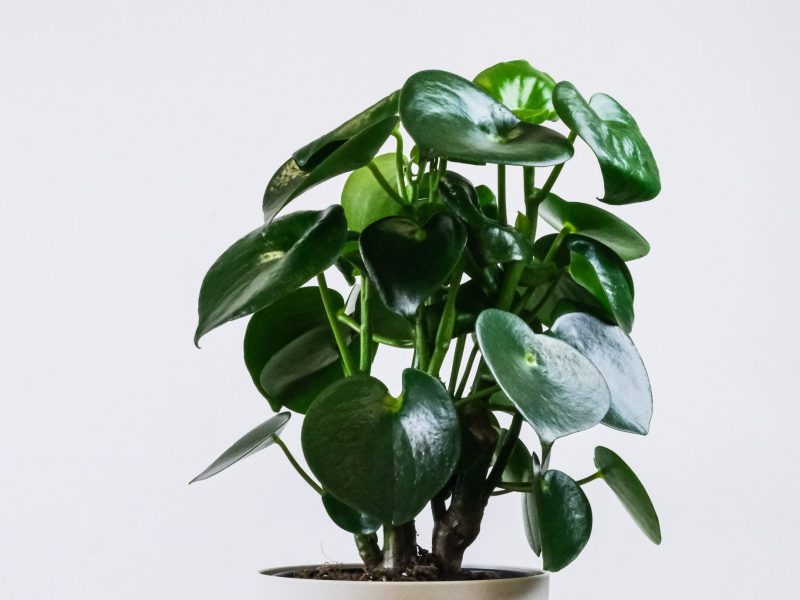
Raindrop Peperomia
Peperomia Polybotrya
Don’t mistake this one for the more common Pilea Peperomioides as it’s definitely got its own personality and is so much easier to care for!! With teardrop-shaped leaves, the Raindrop Peperomia only grows to about 30m high so is perfect for a windowsill or small space.
When it comes to caring for them, they really aren’t fussy. Just a good amount of sunlight, moderate water levels and preferably away from cold drafts. One top tip we have to keep the leaves clean is misting them or wiping them down regularly as the large flat leaves just invite dust to settle. The whole Peperomia family is safe for pets and humans so this is definitely one for the list.
Find out more in our Raindrop Peperomia care guide.
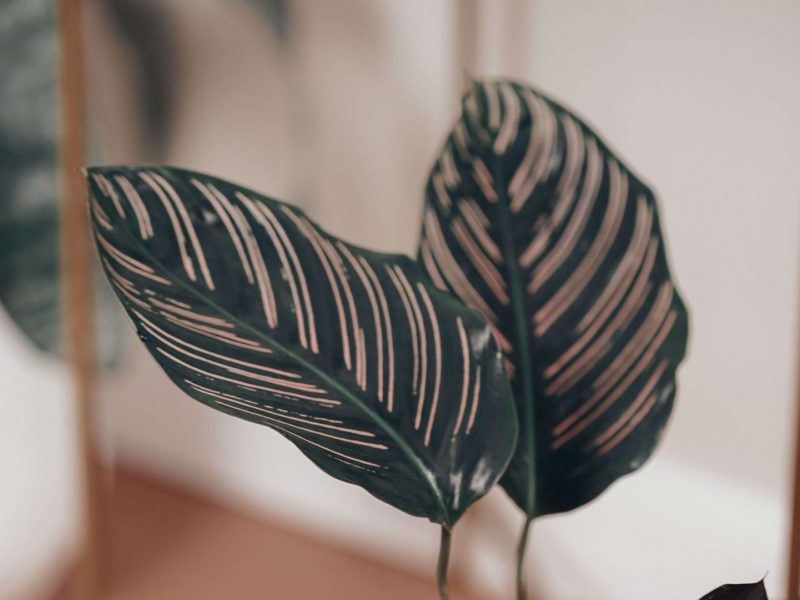
Pinstripe Calathea
Calathea ornata
This is probably one of our favourite houseplants here at Fiddle and Thorn. Whilst they are a little fussier than a lot of other plants, their stunning pink striped leaves really make up for it. Their dark green glossy leaves can reach up to around 30cm when your plant starts to mature, so they really stand out in a room of plants.
Native to South America, these plants need high humidity or you’ll very quickly see dry leaf edges appear. You also want to keep them away from intense light or the pink stripes will start to fade which is always devastating. As with all the plants on this list, they are safe for pets and humans so you don’t need to worry about putting them in your child’s bedroom or around your home generally.
Find out more in our Pinstripe Calathea care guide.
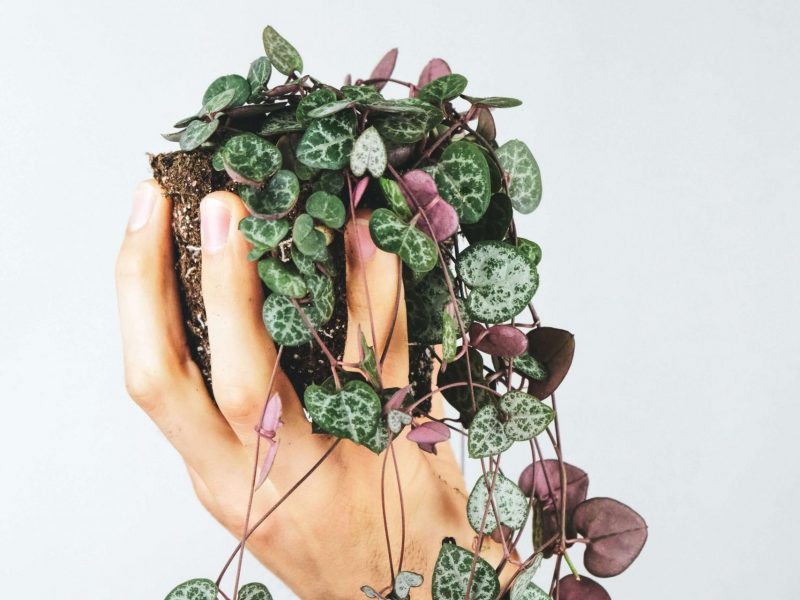
String of Hearts
Ceropegia woodii
Native to South Africa, the String of Hearts should be top on your list for trailing houseplants. You don’t get much more unique than their speckled heart-shaped leaves. The other thing we love about the String of Hearts is that it’s such a fast grower over the spring and summer months, you’ll blink and there will be two new leaves popping out somewhere.
The String of Hearts is a semi-succulent plant meaning they don’t need much water, otherwise, it’ll cause their delicate shallow leaves to rot pretty quickly. Oh, and because they have such shallow roots, you won’t need to repot for a very very long time.
It makes the perfect plant for hanging down shelving, and because its human and pet friendly, you don’t need to worry about it ever becoming too long!
Find out more in our String of Hearts care guide.
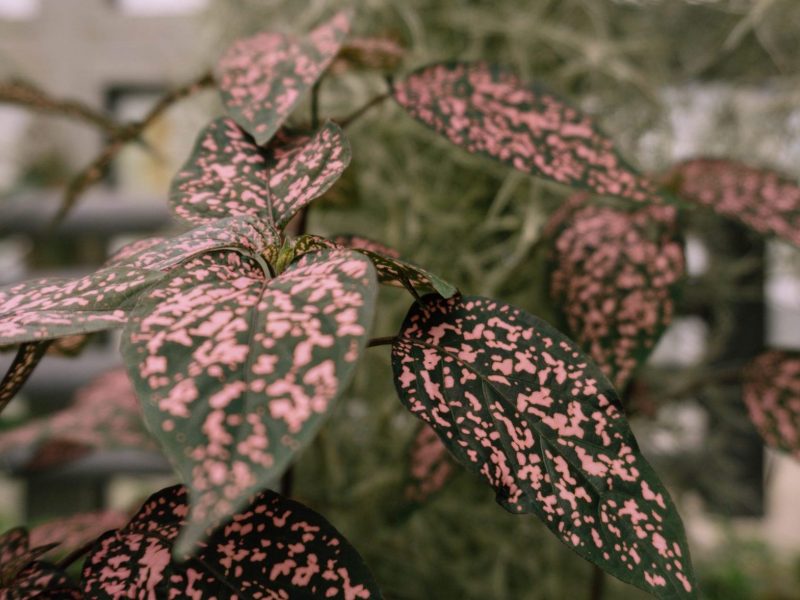
Polka Dot Plant
Hypoestes phyllostachya
Polka Dot Plants come in all kinds of colours, from pink to green, white and red. Although they have super delicate leaves, they aren’t actually too difficult to care for so long as they don’t receive any direct light (this fades and burns the leaves) and don’t have to sit in any waterlogged soil.
One great thing about Polka Dot Plants is that they can very happily adapt to a range of light levels, so if you’re looking for something to fill that shady corner of the nursery, you might have just found the perfect plant! These are relatively non-toxic which means your child or pet would have to eat a really really large quantity of it to ever feel something is wrong so it shouldn’t cause any issues.
If we had to sum up this plant in just one sentence it would be they are the perfect fit for someone who is looking for a little special something but who doesn’t want all the faff that can come with a lot of other houseplants!
Find out more in our Polka Dot Plant care guide.
So that is our shortlist for the best houseplants for a baby’s nursery or child’s bedroom. All are safe for children to be around so it’s just a case of figuring out how much space you have, as well as what the light conditions are in the room. We hope that these can provide a splash of greenery into your home.
Check out our Plant Index for detailed information on all of our favourite houseplants.














